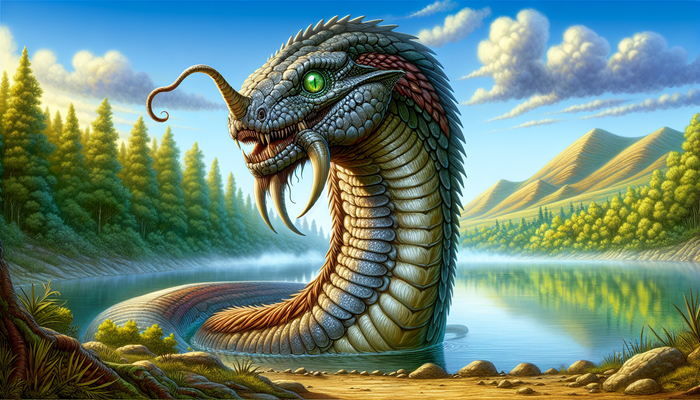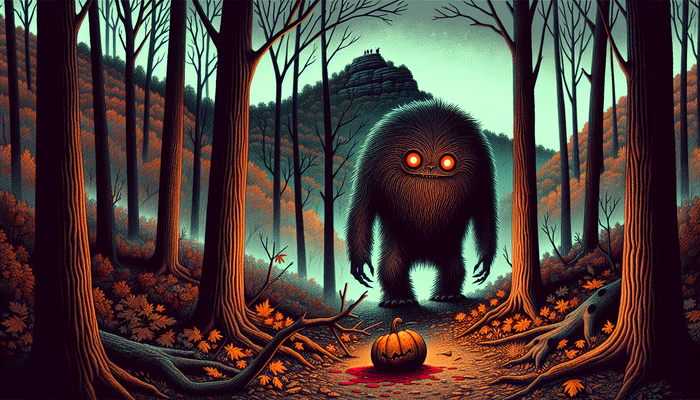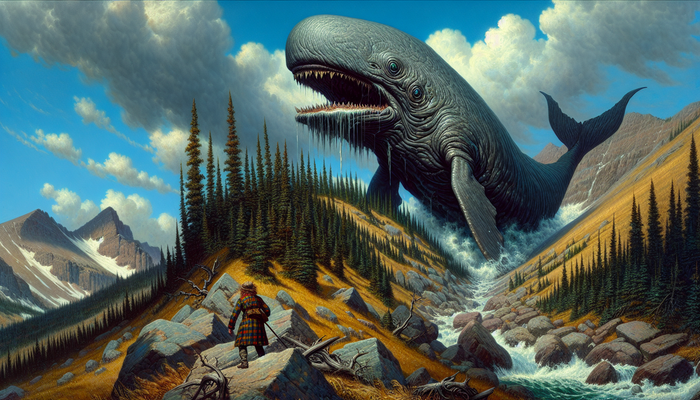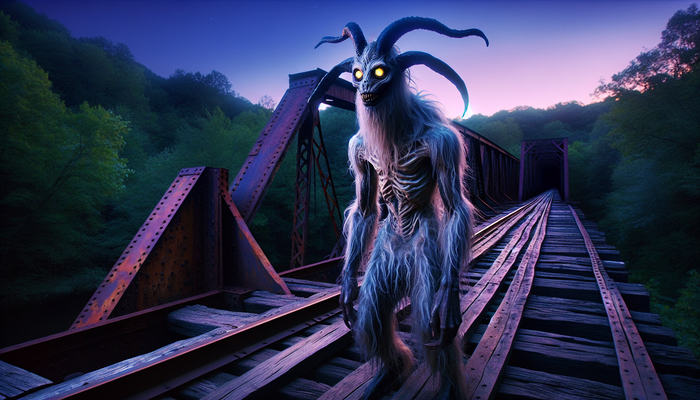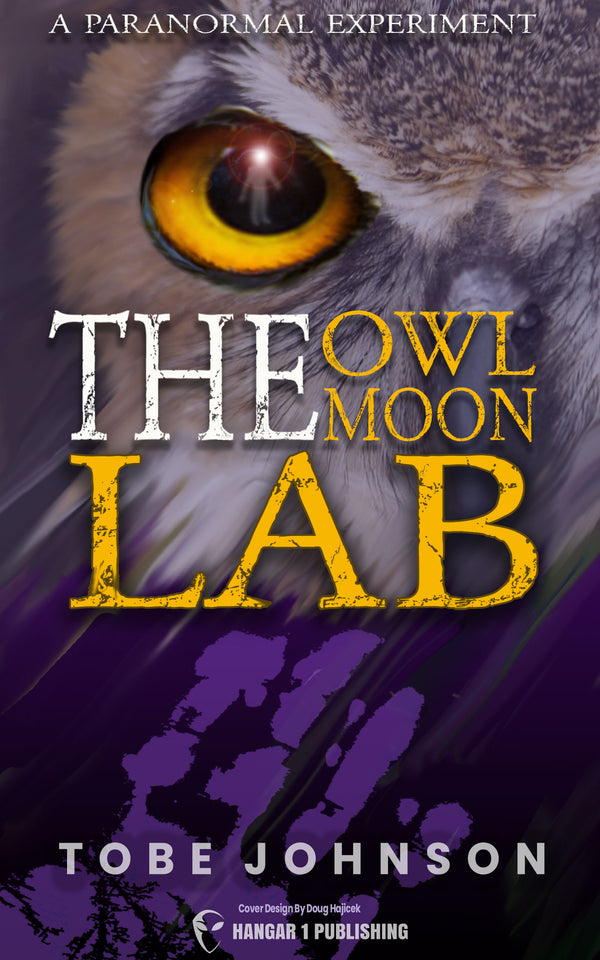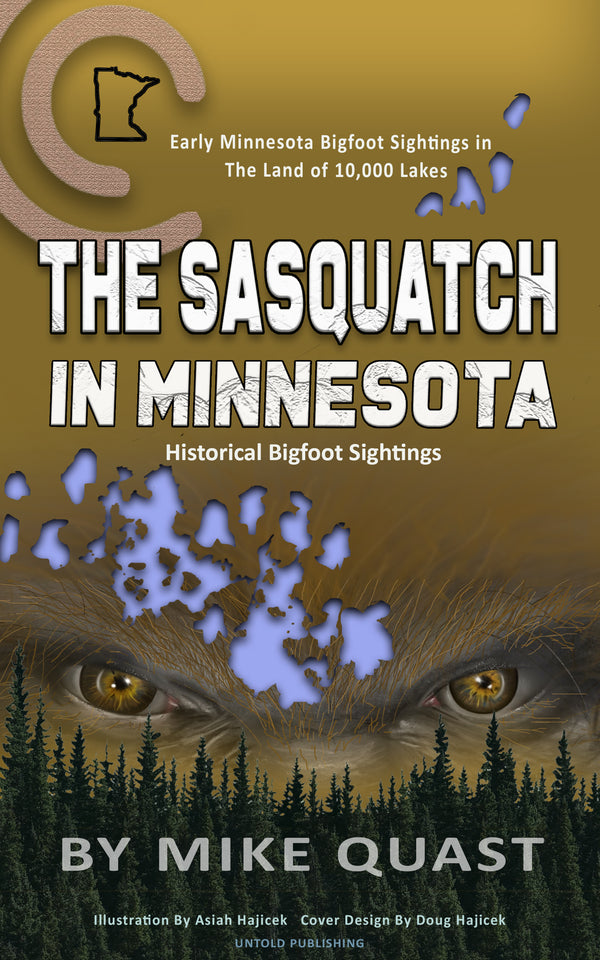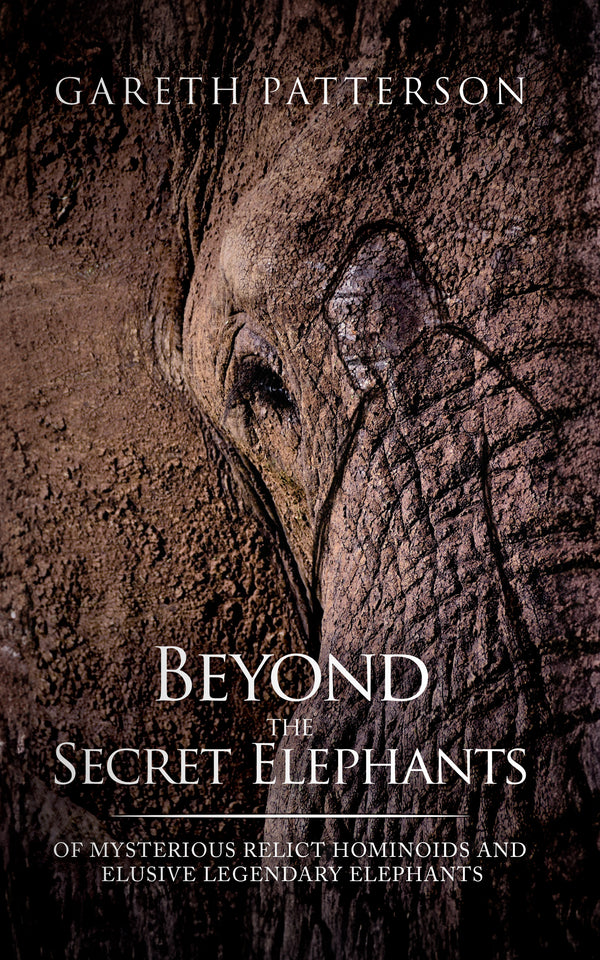Mogollon Monster: Arizona's Elusive Bigfoot

By Jack Sullivan, Cryptozoologist
In the realm of cryptozoology, few creatures have captured the human imagination quite like Bigfoot. This elusive, ape-like being has been the subject of countless stories, investigations, and debates, with alleged sightings reported across the globe. From the dense forests of the Pacific Northwest to the snowy peaks of the Himalayas, tales of hairy, bipedal creatures have permeated folklore and popular culture for centuries.
But while the Sasquatch of the Pacific Northwest may be the most famous iteration of this legendary creature, it is far from the only one. In the rugged wilderness of Arizona, a similar being known as the Mogollon Monster has been leaving its mark on the landscape and the minds of those who claim to have encountered it. This enigmatic creature, often referred to as Arizona's Bigfoot, has a rich history of sightings and encounters that have captivated believers and skeptics alike.
As a dedicated researcher and enthusiast of all things cryptozoological, I have long been fascinated by the legend of the Mogollon Monster. Over the years, I have pored over countless reports, interviewed eyewitnesses, and ventured into the heart of the creature's alleged habitat in search of answers. What I have discovered is a complex tapestry of stories, evidence, and speculation that has only deepened my curiosity and resolve to uncover the truth behind this enduring mystery.
In this article, I will take you on a journey through the history, habitat, and lore surrounding the Mogollon Monster. We will examine the creature's physical characteristics, delve into the most compelling sightings and encounters, and explore the scientific and cultural perspectives that have shaped our understanding of this cryptid. Along the way, we will grapple with the questions that have long haunted those who have pursued the Mogollon Monster: Is it a flesh-and-blood animal that has eluded detection, a figment of our collective imagination, or something in between? And what does its enduring presence in Arizona's wilderness say about our relationship with the unknown?
So join me as we embark on this quest to uncover the secrets of the Mogollon Monster. Whether you are a true believer, a hardened skeptic, or simply someone with a passion for the unexplained, I promise that this journey will be one filled with intrigue, wonder, and perhaps even a touch of fear. For in the search for Arizona's elusive Bigfoot, we may just find ourselves confronting the very limits of what we think we know about the world around us.
The Legend of the Mogollon Monster
Description and characteristics
The Mogollon Monster, as described by those who claim to have encountered it, is a truly imposing creature. Standing at over seven feet tall, this bipedal being is said to possess a muscular, humanoid frame covered in shaggy hair that ranges in color from dark brown to reddish hues. Its face, hands, and feet are often reported to be devoid of hair, revealing leathery, weathered skin beneath.
One of the most striking features of the Mogollon Monster is its eyes. Deep-set and expressionless, these orbs are said to convey a sense of ancient wisdom and untamed ferocity. Some witnesses have described feeling an almost hypnotic effect when locking gazes with the creature, as if it possesses the ability to peer into the very depths of the human soul.
The Mogollon Monster's head is often portrayed as having a distinct, square shape, with a prominent brow ridge and a jaw that juts forward in an almost ape-like manner. This, combined with its broad shoulders and barrel-shaped chest, gives the creature an unmistakably primal and powerful appearance.
Perhaps one of the most unsettling aspects of the Mogollon Monster is the odor that is said to accompany it. Described by some as a combination of rotting flesh, skunk musk, and decaying vegetation, this pungent stench is often the first indication that the creature is nearby. Some have speculated that this odor may serve as a territorial marker or a means of communication with others of its kind.
When the Mogollon Monster moves, it is said to do so with an otherworldly grace belying its size. Its strides are long and fluid, covering great distances with ease. Some witnesses have reported seeing the creature effortlessly navigate steep, rocky terrain that would challenge even the most experienced human hikers. And when it wants to remain hidden, the Mogollon Monster seems to melt into the shadows of the forest, becoming all but invisible despite its considerable bulk.
The footprints left behind by the Mogollon Monster are another key piece of evidence cited by researchers and enthusiasts. Measuring up to 22 inches in length, these tracks dwarf those of any known animal in the region. The prints are often described as having a distinct humanoid shape, with clear impressions of toes and a prominent arch. Some castings have even revealed dermal ridges, similar to fingerprints, adding to the creature's aura of mystery and intelligence.
Habitat and range
The Mogollon Monster derives its name from the Mogollon Rim, a massive escarpment that dominates the landscape of central and eastern Arizona. Stretching for over 200 miles, this rugged, forested region is characterized by its towering ponderosa pines, deep canyons, and sprawling mesas. It is a land of stark beauty and untamed wilderness, where nature still holds sway over the affairs of humans.
It is within this vast expanse that the majority of Mogollon Monster sightings have been reported. From the city of Prescott in the northwest to the small towns of Alpine and Clifton in the southeast, encounters with the creature seem to follow the contours of the Mogollon Rim like a ghostly trail.
One of the most intriguing aspects of the Mogollon Monster's alleged habitat is its diversity. The creature has been spotted in a wide range of environments, from the dense, shadowy depths of the ponderosa pine forests to the sun-baked scrublands of the high desert. Some reports even place the creature near riparian areas, suggesting that it may be drawn to water sources such as streams, rivers, and lakes.
This adaptability has led some researchers to speculate that the Mogollon Monster may possess a high degree of intelligence and resourcefulness. After all, any creature capable of thriving in such a varied and challenging landscape would need to be able to locate food, water, and shelter with great efficiency.
The remote nature of the Mogollon Rim has also played a role in the enduring mystery surrounding the creature. With vast stretches of wilderness largely untouched by human development, there are ample opportunities for a creature like the Mogollon Monster to remain hidden from prying eyes. The rugged terrain and dense vegetation provide natural cover, while the sheer size of the area makes comprehensive exploration a daunting task.
This remoteness has also contributed to the aura of mystery and fear that surrounds the Mogollon Monster. For those who venture into the creature's alleged domain, there is a palpable sense of being watched, of being in the presence of something ancient and unknowable. It is this feeling, perhaps more than any physical evidence, that has helped to cement the Mogollon Monster's place in the annals of cryptozoology.
Comparison to other Bigfoot-like creatures
While the Mogollon Monster may be Arizona's most famous cryptid, it is far from the only Bigfoot-like creature to have captured the public's imagination. Indeed, tales of hairy, humanoid beings have been a staple of folklore and mythology for centuries, spanning cultures and continents.
Perhaps the most well-known of these creatures is the Sasquatch of the Pacific Northwest. Often referred to simply as "Bigfoot," this enigmatic being has been the subject of countless sightings, investigations, and pop culture references. Like the Mogollon Monster, the Sasquatch is typically described as a large, bipedal creature covered in shaggy hair, with an appearance and behavior that seems to blur the line between human and animal.
There are, however, some notable differences between the two creatures. For one, the Sasquatch is often portrayed as being significantly larger than the Mogollon Monster, with some reports placing its height at over nine feet tall. Additionally, the Sasquatch is more commonly associated with the dense, temperate rainforests of the Pacific Northwest, while the Mogollon Monster is tied to the more arid and mountainous regions of Arizona.
Another notable Bigfoot-like creature is the Yeti, also known as the Abominable Snowman. This legendary being is said to inhabit the snowy peaks and glacial valleys of the Himalayas, leaving behind massive footprints and sparking fear and awe in the hearts of the local people. Like the Mogollon Monster and the Sasquatch, the Yeti is often described as a large, hairy, humanoid creature, though its white or grayish coloration sets it apart from its North American counterparts.
Interestingly, some researchers have suggested that these various Bigfoot-like creatures may represent localized variations of the same species, each adapted to its specific environment and ecosystem. This theory posits that the Mogollon Monster, Sasquatch, and Yeti are all members of a relic population of hominids that have managed to survive and thrive in the remote wilderness areas of the world.
Others, however, argue that the differences between these creatures are too significant to be explained by mere regional adaptation. They point to the unique characteristics and behaviors associated with each cryptid as evidence that they may represent distinct species or even genera.
Regardless of their potential taxonomic relationships, one thing is clear: the Mogollon Monster, Sasquatch, and Yeti have all left an indelible mark on the human psyche. They have become symbols of the unknown, the untamed, and the mysterious, embodying our primal fascination with the creatures that lurk just beyond the edges of our understanding.
In the case of the Mogollon Monster, this fascination is deeply rooted in the rugged landscape and rich cultural heritage of Arizona. The creature has become a part of the state's identity, a living embodiment of the wild and untamed spirit that has long defined the American Southwest. And as we shall see in the coming sections, the history of the Mogollon Monster is one filled with intrigue, mystery, and no small amount of controversy.
Historical Sightings and Encounters
Early 20th century reports
The legend of the Mogollon Monster may have gained widespread attention in recent decades, but the creature's history in Arizona stretches back much further. Some of the earliest documented sightings of the beast date back to the early 20th century, a time when the state was still a rugged and sparsely populated frontier.
One of the most notable of these early encounters was reported by a man named I.W. Stevens in 1903. Stevens, who was visiting the Grand Canyon region at the time, claimed to have had a terrifying run-in with a creature he described as a "wild man of the rocks."
According to Stevens' account, published in the Arizona Republican newspaper, the creature was unlike anything he had ever seen before. It was covered in long, white hair and had a matted beard that reached down to its knees. Its fingers were tipped with sharp, talon-like claws, and its skin was a sickly grayish color where it was visible beneath the hair.
But perhaps the most disturbing aspect of Stevens' encounter was the creature's behavior. He claimed to have stumbled upon the beast while it was in the midst of feasting on the carcasses of two mountain lions. When Stevens approached, the creature allegedly threatened him with a club and let out an "unearthly screech" that echoed through the canyon.
Stevens' account, while certainly sensational, is notable for several reasons. For one, it establishes the Mogollon Monster as a creature with a long and storied history in Arizona, predating the more famous Sasquatch sightings of the mid-20th century. It also provides an early glimpse into the creature's alleged appearance and behavior, which would be echoed in countless reports in the decades to come.
Of course, it is impossible to verify the accuracy of Stevens' account, and some have dismissed it as a tall tale or a hoax. But the fact that it was published in a reputable newspaper at the time suggests that it was taken seriously by at least some members of the public.
Other early 20th century sightings of the Mogollon Monster are more difficult to pin down, as they often come from second- or third-hand accounts passed down through generations. Some of these stories tell of miners and prospectors who claimed to have seen the creature lurking in the shadows of their camps, or of ranchers who found strange, oversized footprints near their livestock.
One such account, recounted by a man named John Hance, tells of a group of cowboys who allegedly encountered the Mogollon Monster while out on a cattle drive in the early 1900s. According to Hance, the creature emerged from a thicket of trees and let out a bone-chilling scream that sent the cattle stampeding in all directions. The cowboys, he claimed, were so terrified that they refused to return to the area for years afterward.
While these early accounts may lack the level of detail and documentation of later sightings, they nevertheless help to establish the Mogollon Monster as a creature with deep roots in Arizona's history and folklore. They paint a picture of a wild and untamed landscape, where the line between myth and reality was often blurred, and where the unknown lurked just beyond the edges of civilization.
As we shall see in the next section, these early encounters set the stage for a new wave of Mogollon Monster sightings in the mid-20th century, a time when the creature would begin to capture the imagination of a wider audience and attract the attention of serious researchers and investigators.
Mid-20th century sightings
As the 20th century progressed, sightings of the Mogollon Monster began to increase in both frequency and detail. The mid-century period, in particular, saw a surge of reported encounters with the creature, many of which would go on to become some of the most famous and well-documented cases in the annals of cryptozoology.
One of the most notable of these mid-century sightings occurred in the 1940s, when a young boy scout named Don Davis claimed to have had a terrifying encounter with the Mogollon Monster while on a camping trip near Payson, Arizona.
According to Davis, who would later go on to become a prominent cryptozoologist in his own right, the incident occurred late one night as he and his fellow scouts were sleeping in their tents. Davis was awakened by the sound of something rummaging through the campsite, and when he called out to investigate, he was shocked to see a massive, hairy figure standing over his sleeping bag.
Davis described the creature as having a "square" face, with deep-set eyes that were difficult to make out in the darkness. Its upper body, he claimed, was incredibly muscular, with arms that were "easily upwards of 6 inches in diameter." The creature was covered in thick, shaggy hair, and emitted an overpowering stench that Davis likened to the smell of "dead peat moss."
Terrified, Davis pulled his sleeping bag over his head and waited for the creature to leave. After what felt like an eternity, he heard the sound of heavy footsteps retreating into the forest, and the creature was gone.
From Bigfoot to UFOs: Hangar 1 Publishing Has You Covered!
Explore Untold Stories: Venture into the world of UFOs, cryptids, Bigfoot, and beyond. Every story is a journey into the extraordinary.
Immersive Book Technology: Experience real videos, sights, and sounds within our books. Its not just reading; its an adventure.



